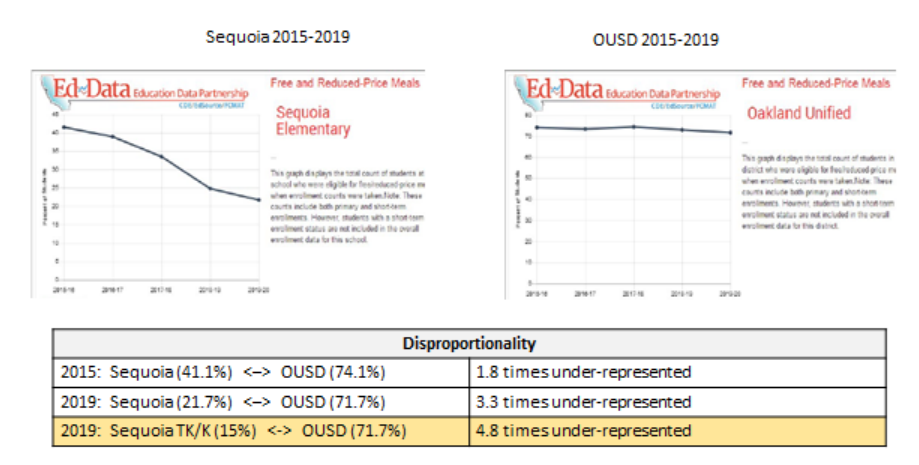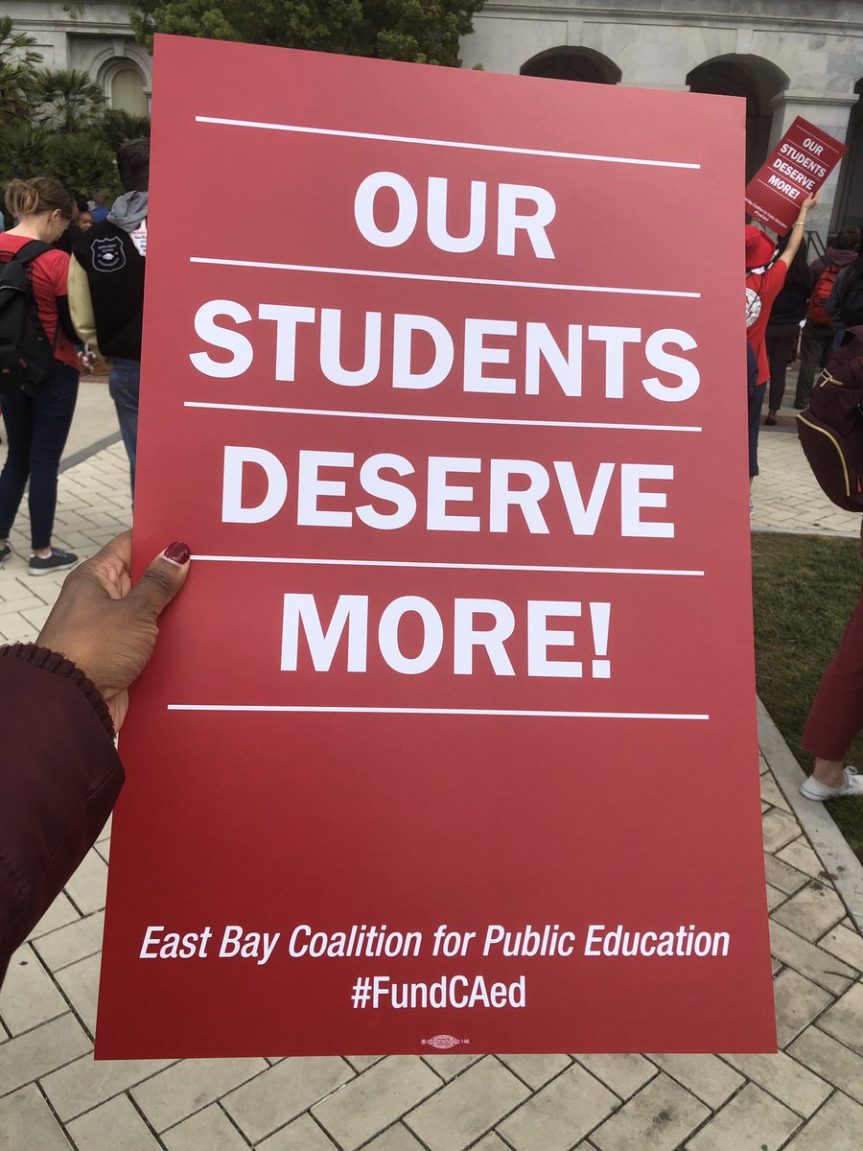OUSD has incredibly segregated schools, and in gentrifying neighborhoods, it is getting worse. So I was encouraged to see some school communities taking up the challenge of looking at their enrollment rules and how they either furthered segregation or interrupted it. Unfortunately, after months of meetings and debate across these school communities, their enthusiasm for equity was met with cold shower and delay at the Board meeting. A delay that may end up killing the plans, at least for this year, because enrollment opens on 11/16.
Sequoia, Chabot, and Edna Brewer’s school communities had each submitted proposals to increase diversity at their school amdist a gentrifying city. I am going to go through Sequoia’s proposal but you can find all of them linked here (click on the agenda for 10/28 and scroll until the enrollment proposals). And I will also describe why it was delayed, and why it should pass, as they all should.
Sequoia is a high demand school with students across the City wanting to attend. It is also a school that is getting less diverse along with the City, an 80% decrease in Black students. Economic diversity similarly decreased 47%, with almost half as many low income students in 2019 that they school had in 2015. Meanwhile the overall OUSD free and reduced numbers are relatively stable, and nearly 3 times as high as it is at Sequoia.


So the trends are clear, and they would just get worse, particularly because siblings get a preference in admissions. So once a school gets richer and Whiter it is more likely to just keep getting more so, especially with the Oakland housing prices.
Sequoia’s answer was to provide a preference for families from low-income neighborhoods, and the predicted result was to increase the percentage of low income kindergarteners from 30% to 50%. They had vetted the proposal and had broad support in the community. So what could go wrong?
When the Perfect is the Enemy of the Better Than What We Have
First, let me be clear. I don’t think these incremental changes cut to the heart of inequality in the District. And as many Board members stated, it would be great to have great neighborhood schools everywhere, that families wanted to attend. But we don’t have that, and for all these schools it is really just re-ordering the waitlists and making sure a more diverse pool is admitted. They aren’t busing anyone, or forcing integration—they are pulling kids off the waitlist who already applied in a different order. And increasing at least the socioeconomic diversity in the process.
These are choices families already wanted to make, they just didn’t get actual access. This is an imperfect solution but its better than what we already have.
These enrollment changes won’t fix OUSD, they are a relief valve for parents who want a school outside their neighborhood and had so far been stymied. Whether these schools actually provide better outcomes for students is also an open question—but one we should study during the pilot programs. And I trust parents more, than attendance boundaries in terms of what is best for their child.
The Mirage of “A Great School in Every Neighborhood”
Everyone loves the idea of great neighborhood, including families that shlep their kids across the City every day. But we have never had that, there is not practical plan to accomplish that, and a kid entering kindergarten or high school can’t necessarily wait for that dream to appear.
And that hypothetical state of bliss cannot be practically compared to the choices families have to make every day. And lets be real, I don’t think any of the directors except director Hinton actually sent their kid to a Flatlands neighborhood school (and no Tech does not count as a Flatland school).
In the shadow of the discussion was the “proximity thesis” or an implicit critique of it. The idea that Black kids need to sit near White kids to learn, to oversimplify the argument (I am not saying this is what the schools were doing, only that it came up in the discussion). And the challenges practically and philosophically with “integration.”
Oaklandside summed up some of the sentiments
“Some community members, however, including some on the district’s enrollment committee, think that reserving a few extra seats at some of the district’s most in-demand schools will not solve underlying issues like segregation, lack of transportation, or the inadequate number of high-quality schools across the city. They’d like to see the district move away from a process where families are competing for a handful of spots at a few schools.
Again all that is true. Yes…And. We need to create or expand great schools in the Flats that are high demand and serve students well, we already have several. But as of now, at least according to these parents, applying out of their neighborhood is the best shot they have. And I am not trying to be snarky, but I haven’t seen ANY Plans to address the identified underlying issues from anywhere else.
Until we see plans, and resources to create “great neighborhood schools everywhere” then it is just a talk. And I don’t see no plans and don’t see no money.
And while the plans from these three schools really only treat the symptoms, that is more than anyone else is doing. And the school communities themselves debated these same issues, questions, and counterbalancing concerns, addressing them over months rather than a 7 minute presentation. Fixing the OUSD meetings is a longer discussion, but in the short term, OUSD should listen to the school communities, and pass and study the pilots.
We know the status quo, and we can see the worsening trendlines. We can be complicit in this system and do nothing with predictable results or we can try to disrupt it, however imperfectly. I vote for a potentially flawed answer, over silence in the face of glaring inequity. I hope the board will to.

